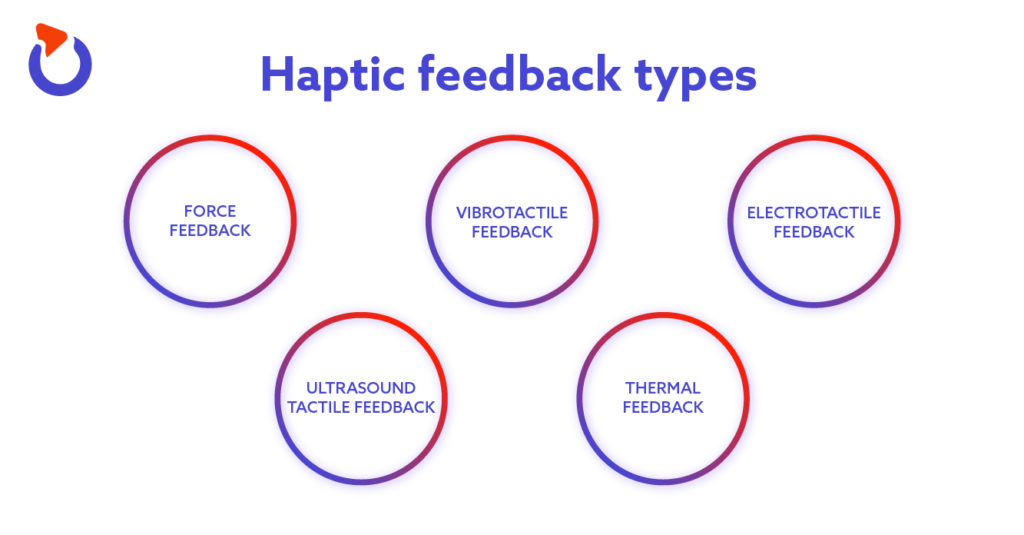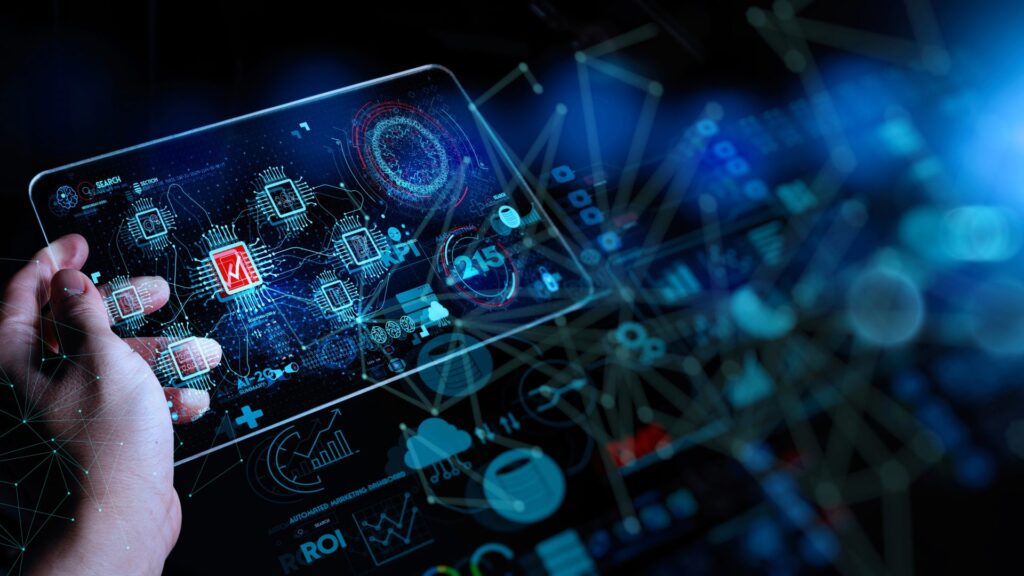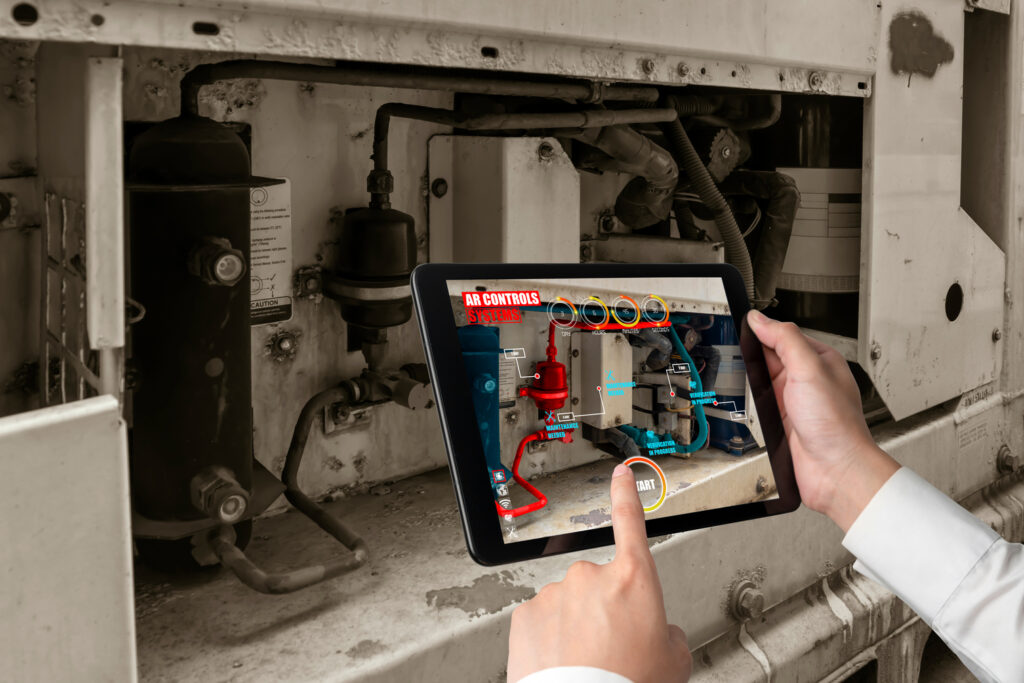What is haptics: the introductory guide
Let’s face it: touch may be the most underestimated of human senses, but it’s also almost universally used by humans for exploring and interacting with immediate surroundings right from the moment they’re born, even before they start seeing properly. Touch not only allows us to fully immerse ourselves into certain experiences but it’s also interlinked with expressing and understanding emotions. Visual or sound signals are often not enough – only adding tactile feedback – or simply employing haptic technology to any – virtual or real-life experience allows you to have a fully immersive exposure to it.
What is haptics, and how does it work?
The term ‘haptics’, or ‘haptic technology’, relates to the use of tactile feedback in device-to-human interactions. Instead of displaying a visual confirmation of completing/failing to complete a certain action, a device can send i.e. vibrations or mid-air pulsation to let its users know of the outcome of this action. The technology itself was first used in the aviation industry in the 1970s as an element of a pilot warning system where the controls would shake to alert the pilot about turbulences or unstable weather conditions.
By using a sense of touch, haptics allows the user to get feedback on the actions they take and keeps them immersed in the experience, so naturally, haptics has been heavily used in sectors where this type of attention is necessary – be it for safety or engagement reasons – including automotive and gaming industries.
Haptics vs haptic feedback
Haptics is a model of communication between a device and its operator, with two-way communication being carried out through touch. Haptic feedback is what’s being communicated to the operator via touch or mid-air sensations.
What are the haptic feedback types?

Haptic feedback can be divided into five main categories:
- Force feedback where devices move with their users and have an impact on larger areas of the human body;
- Vibrotactile feedback is commonly used in mobile phones and any hand-held devices and refers to sending more subtle vibration signals;
- Electrotactile feedback is a type of signal that uses not only vibrations but also impacts the human body by sending electrical impulses to nerve endings;
- Ultrasound tactile feedback uses high-frequency sound waves to provide haptic feedback;
- Thermal feedback is when a haptic device is in direct contact with human skin and sends signals via subtle changes in heat.
Why is haptics great for accessibility?
Used initially in the gaming industry only, haptics has quickly become the go-to technology for increasing accessibility and its inclusion potential has been discovered. Since then, the Human-Machine Interaction industry employed tactile feedback in all types of devices and applications, including remote (intuitive) surgery, brainwave technology, haptic feedback signal mimicking Braille or using haptics to reduce anxiety and stress.
The use of touch makes the haptics truly accessible to almost anyone and instinctive at the same time. You don’t need to be able to see or hear to receive haptic feedback and responding to it can be enabled through peripheral devices (i.e. a full-body haptic suit and other wearables) even for people with limited or near non-existent mobility.
Check our human-machine interafce services
Learn moreHaptics use cases
As mentioned above haptics can be widely used in almost any industry, but here’s a list of sectors where it’s most common:
Automotive
In modern cars, there are more and more touchscreens and fewer and fewer buttons. Haptic feedback gives us an opportunity to know if our action was completed. Recently – for example, in the latest models of Audi – the haptic feedback mimics pushing a physical button which is achieved by using small engines that deliver vibrations with x, y or z axis.
This haptic feedback is crucial in the automotive industry as it allows users to focus on the road ahead rather than checking if they’ve pressed the right button. Haptics is a subtle way of letting you know that your action is completed, without interrupting anyone or distracting you from what you’re doing.
As this case study shows, using haptics in cars instead of a touchscreen reduces the ‘glance time’ by 25%, with 39% of this research study participants being able to not look away from the road for the entire duration of the experiment.
Gaming
Haptics was first used in the gaming industry, and this area is also still going strong with this technology being used in VR goggles and full-body suits that allow you to get yourself immersed in the game.
Healthcare
Another sector where haptics can be used in healthcare. Remote surgeries have become increasingly common these days and it’s easy to imagine a surgeon wanting to get haptic feedback as they carry out a surgical procedure.
Wellness
As mentioned above, haptics can help decrease stress and anxiety, so it’s widely used in wellness – including meditation – apps. According to a research study conducted at the University of Bristol in 2021, haptics can be in fact, used for easing anxiety and stress. During the study, participants – mostly students – were given a haptic cushion that mimicked the human breathing pattern. They then had to estimate how much interaction with the said cushion decreased their pre-exam stress levels. Most of them that receiving and responding to tactile stimuli made them far less tense and they’ve been able to stay calm before and during the exam if it’s taken place directly after the interaction. The study did not explore the topic of how long this stress reduction effect could last, so more research is needed in this area.
Augmented reality
Haptics will play a more and more significant role in the modern world where at least some experiences are and will become virtualised, located in the metaverse rather than a real-life environment.
How we approach haptics when working with our customers
According to our expert, Michal Jasinski, the first rule of haptics implementation is finding out why you want to implement it.
One of the challenges of R&D is how time- and resource-consuming the projects are, you need to spend at least 3 years to develop something. Adding haptics on top of it is yet another issue. You have to only think about the mechanics of it but also about the physical elements, including small engines. Then you have to test these products – again, it’s a lengthy process and the results so far have been far from satisfactory. It may be too early in the technology life cycle for haptics. With the rise of autonomous driving, we may even move away from haptics.
Over to you
Do you need help developing a haptic feedback device or a system that could be implemented for your product? Contact our team via the contact form on the HMI development and consulting services subpage.
About the author
Contact us
Talk to our expert about enabling continuous HMI development in your company!
RECOMMENDED ARTICLES




